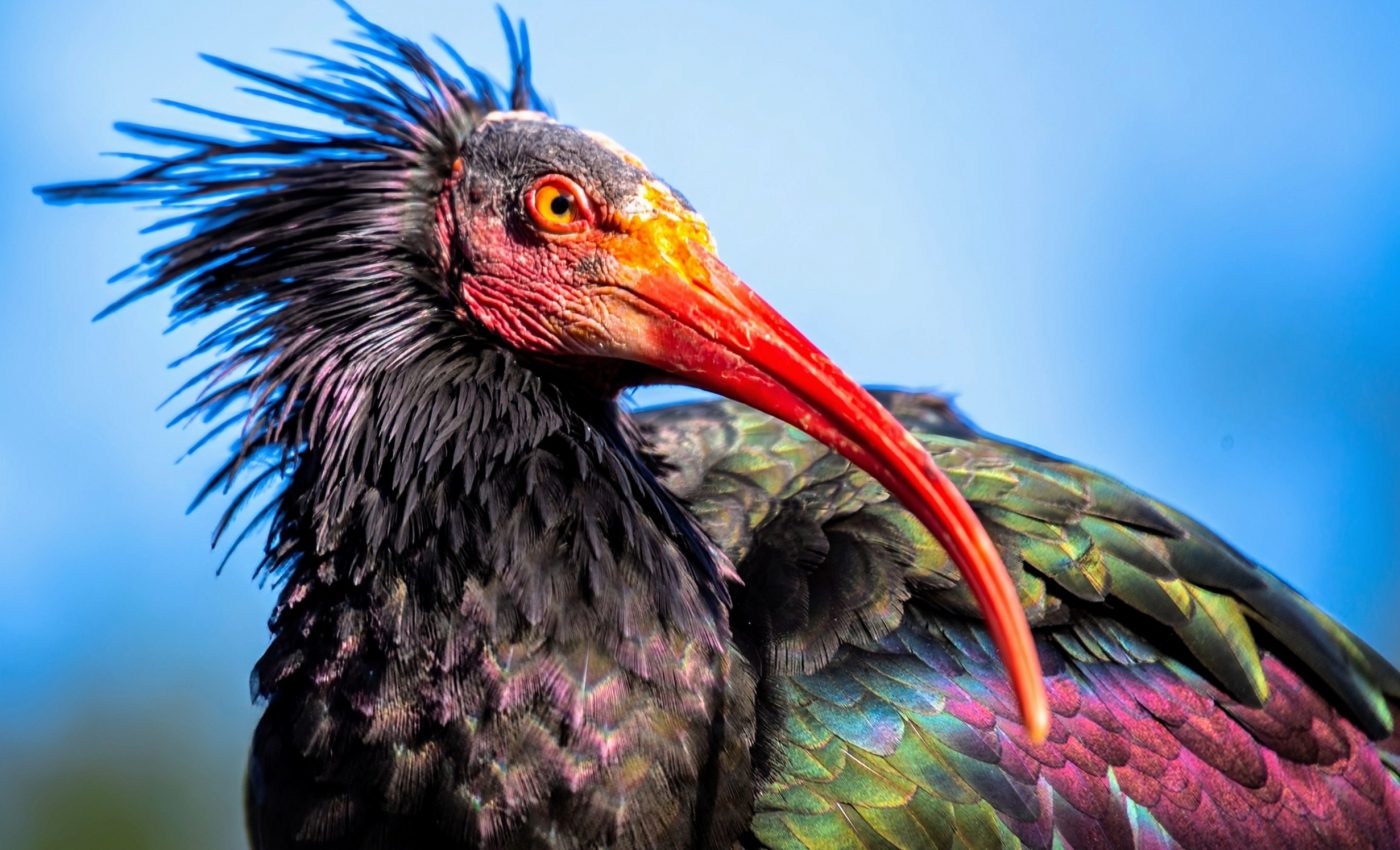
Human ‘foster parents’ guide an extinct bird back to life
The northern bald ibis, a distinctive bird species that was hunted to near extinction by the 17th century, has made a comeback thanks to breeding and rewilding efforts over the past two decades.
These birds, easily recognizable by their black-and-iridescent green feathers, bald red head, and long curved beak, lack the instinctual knowledge of their migration routes without the guidance of wild-born elders.
Foster parents and flight instructors
To address this, a team of scientists and conservationists has taken on the roles of foster parents and flight instructors.
“We have to teach them the migration route,” explained biologist Johannes Fritz.
Historically, the northern bald ibis flew over regions including North Africa, the Arabian Peninsula, and large parts of Europe, including Bavaria in southern Germany.
However, these migratory birds were once considered a delicacy, leading to their disappearance from Europe, although a few colonies survived elsewhere.
Major comeback for the bald ibis
Thanks to the efforts of Fritz and the Waldrappteam, a conservation and research group based in Austria, the Central European population of these birds has grown from zero to nearly 300 since their project began in 2002.
This achievement has led to the species being reclassified from “critically endangered” to “endangered.” Fritz noted that this is the first successful attempt to reintroduce a migratory bird species that had gone extinct on a continental scale.
Flying with the guidance of humans
Currently, a group of northern bald ibises is being guided across central Europe by a microlight aircraft in a remarkable form of assisted migration. Human “foster parents” raise the birds from chicks and use the aircraft to lead them on their migratory journey.
Although the northern bald ibis retains a natural instinct to migrate, they do not know which direction to fly without the guidance of experienced wild-born elders.
17th human-led migration of the bald ibis
Early attempts by the Waldrappteam to reintroduce these birds were largely unsuccessful, as the birds, once released, would fly off in different directions, failing to return to suitable wintering grounds like Tuscany, Italy, and ultimately perishing.
In response, the Waldrappteam took on the dual roles of foster parents and flight instructors for the Central European population, which consists of descendants from various zoo colonies.
These birds were released into the wild in hopes of forming a self-sustaining migratory group. This year marks the 17th human-led migration, and the second time the team has had to navigate a new route to Spain due to the impacts of climate change.
Preparing the birds for the journey
To prepare the birds for migration, the chicks are taken from their breeding colonies just days after hatching. They are then brought to an aviary where foster parents care for them, aiming to “imprint” on the birds so that they bond with and trust the humans who will guide them on their migration.
Barbara Steininger, one of the Waldrappteam’s foster mothers, described her role as being like “their bird mom.”
“We feed them, we clean them, we clean their nests. We take good care of them and see that they are healthy birds,” Steininger said. “But also we interact with them.”
Inspiration from “Father Goose”
Once the birds are ready, Steininger and other foster parents take to the skies in the back of a microlight aircraft, waving and calling out encouragement through a bullhorn as they fly.
It’s an unusual sight: the aircraft resembles a flying go-kart with a large fan at the back and a yellow parachute providing lift. Nonetheless, three dozen birds follow the contraption, piloted by Fritz, as it glides over alpine meadows and foothills.
Fritz was inspired by “Father Goose” Bill Lishman, a naturalist who began teaching Canadian geese to fly alongside his ultralight plane in 1988.
Lishman later guided endangered whooping cranes along safe migration routes and founded the nonprofit “Operation Migration.” His work was the inspiration for the 1996 film Fly Away Home, though in the movie, a young girl takes on the role of the geese’s “mother.”
Climate change and migration routes
Like Lishman’s efforts, Fritz and his team have achieved success. In 2011, the first northern bald ibis independently migrated back to Bavaria from Tuscany.
Each year, more birds follow the same 550-kilometer (342-mile) route, and the team hopes to increase the Central European population to over 350 birds by 2028, aiming for a self-sustaining group.
However, climate change has complicated matters, causing the birds to migrate later in the season. This delay forces them to cross the Alps in colder, more hazardous conditions without the benefit of warm air currents, known as thermals, which help birds soar with minimal energy expenditure.
As a result, the Waldrappteam pioneered a new migration route in 2023, leading the birds from Bavaria to Andalusia in southern Spain.
Pathways for threatened migratory birds
This year, the route spans roughly 2,800 kilometers (1,740 miles) – about 300 kilometers (186 miles) longer than last year’s path. Earlier this month, from an airfield in Paterzell, Upper Bavaria, the team guided 36 birds through clear blue skies with a tailwind that boosted their speed.
The entire journey to Spain may take up to 50 days, concluding in early October. However, Fritz emphasized that their work extends beyond just the northern bald ibis: it’s about creating pathways for other threatened migratory species to follow.
—–
Like what you read? Subscribe to our newsletter for engaging articles, exclusive content, and the latest updates.
Check us out on EarthSnap, a free app brought to you by Eric Ralls and Earth.com.
—–













